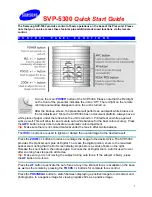
77
Caring for the Camera: Cautions
Do not apply pressure to the monitor, as this could cause
damage or malfunction. Dust or lint on the displays can be
removed with a blower. Stains can be removed by wiping lightly
with a soft cloth or chamois leather. Should the monitor break,
care should be taken to avoid injury from broken glass and to
prevent liquid crystal from the display touching the skin or
entering the eyes and mouth.
❚❚
The Camera Battery and Charging AC Adapter
Do not use the camera at ambient temperatures below 0 °C
(32 °F) or above 40 °C (104 °F); failure to observe this precaution
could damage the camera battery or impair its performance.
Battery capacity may be reduced at camera temperatures from
45 °C (113 °F) to 60 °C (140 °F).
Turning the camera on and off repeatedly when the battery is
fully discharged will shorten battery life. If the camera battery is
fully discharged, recharge the camera before use.
Battery capacity tends to decrease on cold days. Be sure the
camera is fully charged before taking photographs outside in
cold weather and keep the camera warm. Some of the capacity
lost to cold may be regained when the camera warms again.
If the camera will not be used for some time, run the battery flat
and store the camera in a location with an ambient temperature
of 15 °C to 25 °C (59 °F to 77 °F; avoid hot or extremely cold
locations). Repeat this process at least once every six months.
A marked drop in the time the camera retains its charge when
used at room temperature indicates that the battery requires
replacement. The battery is not user-serviceable but can be
replaced, for a fee, by a Nikon-authorized service representative.
















































